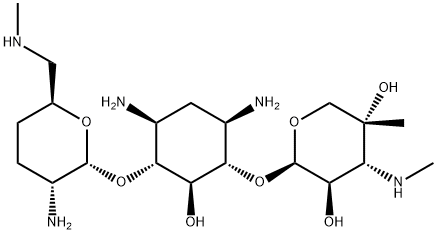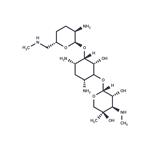
Micronomicin
- Product NameMicronomicin
- CAS52093-21-7
- CBNumberCB31179195
- MFC20H41N5O7
- MW463.57
- MDL NumberMFCD00865016
- MOL File52093-21-7.mol
Chemical Properties
| Melting point | 260° (dec) |
| alpha | D20 +116° (c = 1 in water) |
| Boiling point | 567.39°C (rough estimate) |
| Density | 1.2416 (rough estimate) |
| refractive index | 1.7600 (estimate) |
| storage temp. | 4°C, stored under nitrogen |
| form | Solid |
| pka | 13.29±0.70(Predicted) |
| color | Light yellow to yellow |
| Water Solubility | Water : 250 mg/mL (539.29 mM; Need ultrasonic) |
| FDA UNII | S9AZ0R40QV |
| ATC code | S01AA22 |

